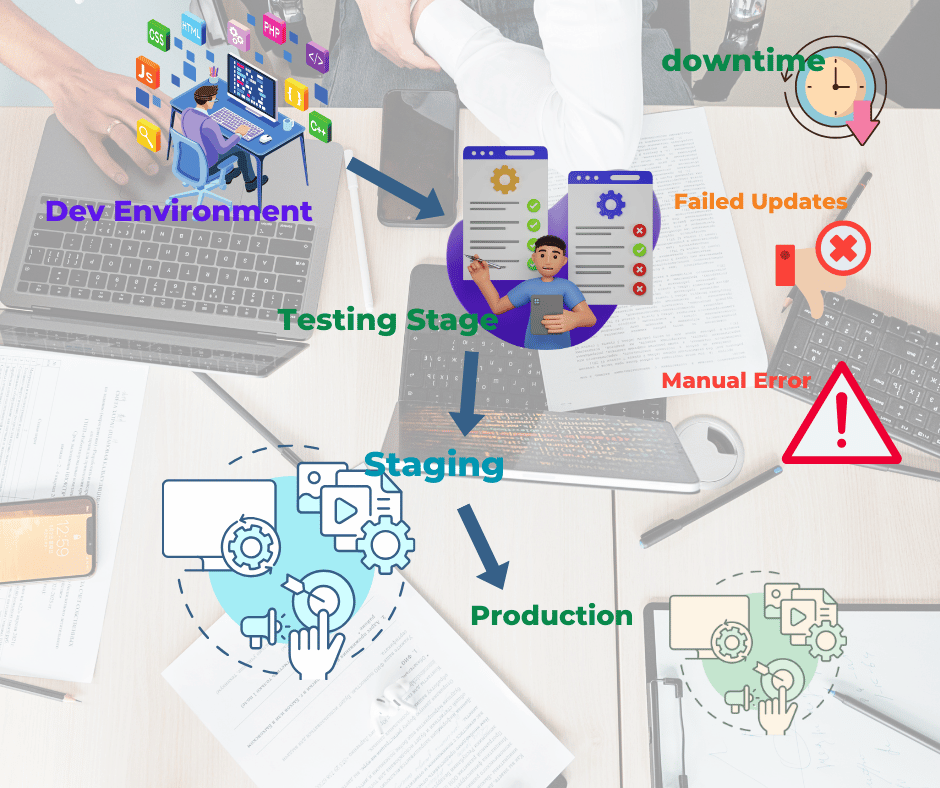Introduction
In the world of cloud computing, maintaining high availability and smooth performance is critical, especially when managing traffic to your applications. Amazon Web Services (AWS) offers several load balancing options to distribute incoming traffic across multiple EC2 instances, ensuring that your application stays responsive. However, what happens when one of your instances needs to be taken offline for maintenance, scaling, or replacement?
This is where Connection Draining comes in, an essential feature designed to ensure a seamless user experience during the deregistration of an EC2 instance. Whether you’re using a Classic Load Balancer (CLB) or the more modern Application Load Balancer (ALB) or Network Load Balancer (NLB), Connection Draining—or Deregistration Delay as it’s called in ALB and NLB—gives inflight requests enough time to complete before the instance is removed from service. This mechanism prevents premature disconnection and minimizes service interruptions.
In this post, we’ll dive deep into how AWS Connection Draining works, its significance, and how you can optimize its settings to ensure smooth traffic management during instance transitions.
What is Connection Draining?
Connection Draining is a feature in AWS designed to ensure that active requests to an EC2 instance are handled gracefully, even when the instance is being deregistered or marked as unhealthy. The goal is to give the instance enough time to complete any ongoing, or inflight, requests before it is taken offline. This prevents users from experiencing dropped connections or interruptions during the transition.
Connection Draining has two names depending on the type of load balancer you’re using:
• Connection Draining for Classic Load Balancers (CLB).
• Deregistration Delay for Application Load Balancers (ALB) and Network Load Balancers (NLB).
When an instance is being drained, the load balancer stops routing new requests to it. However, any users who are already connected to the instance are allowed to finish their current tasks within a predefined period, known as the draining period. Once all active requests are completed or the draining period expires, the instance is fully deregistered, and all connections to it are closed.
By default, this draining period is set to 300 seconds (5 minutes), but it can be adjusted to anywhere between 1 second and 3,600 seconds (1 hour) based on the needs of your application. If Connection Draining is disabled, the instance will immediately stop handling requests, which could result in incomplete transactions or disrupted user experiences.
How Does Connection Draining Work?
Connection Draining ensures that EC2 instances being deregistered from a load balancer can finish processing active requests before being taken offline. This allows AWS to gracefully manage traffic and maintain a smooth user experience during instance transitions, whether for scaling, updates, or maintenance.
Let’s break down the process:
1. Instance Marked for Deregistration or Unhealthy
When an EC2 instance is either manually deregistered or marked unhealthy by the load balancer, it enters a “draining” state. During this period, the instance is no longer assigned new requests, but any existing connections or inflight requests are given time to complete.
2. Draining Period Begins
Once in the draining state, the load balancer allows the instance to process its remaining active connections. The duration of this period, known as the draining period, can be configured between 1 and 3,600 seconds, depending on your application’s needs. By default, the draining period is set to 300 seconds (5 minutes).
3. Handling Active Requests
During the draining period, users connected to the instance can continue to interact with it as usual until their requests are completed. No new connections are routed to the draining instance; instead, new requests are directed to other healthy instances in the load balancer’s pool. This ensures that traffic keeps flowing smoothly, and no new users are impacted by the draining instance.
4. Completion or Timeout
If the active requests are completed before the draining period expires, the instance is deregistered immediately, and all connections are closed. However, if some requests are still in progress when the draining period ends, those requests will be terminated, and the instance will be forcefully taken offline.
The flexibility of Connection Draining ensures that applications with different traffic patterns, such as short-lived requests or long-running transactions, can be managed efficiently. For instance, if your application handles short HTTP requests, you can set a low draining timeout to quickly remove an instance. Conversely, for applications dealing with long-lived connections like file uploads or video streams, a longer draining period may be appropriate to allow these tasks to complete without interruption.
Configuration and Parameters
Configuring Connection Draining in AWS is straightforward and flexible, allowing you to fine-tune the behavior based on your application’s needs. The primary parameter that you can configure is the draining timeout, which determines how long AWS will allow existing connections to complete before deregistering an EC2 instance. Let’s break down how you can set up and adjust these settings.
1. Draining Timeout
The draining timeout defines how long an instance remains in the “draining” state after it has been marked for deregistration or is considered unhealthy. This timeout is crucial because it dictates how long active requests can continue to be served by the instance. You can set the timeout anywhere from 1 second to 3,600 seconds (1 hour), depending on your traffic pattern and application requirements.
• Default Value: By default, the draining timeout is set to 300 seconds (5 minutes). This means an instance will stay in the draining state for up to 5 minutes, allowing ongoing requests to complete within that time.
• Custom Value: You can adjust the timeout value according to your needs. For example:
• If your application handles short-lived requests (such as quick API calls or static web pages), a shorter timeout (e.g., 30–60 seconds) may be sufficient.
• For applications that deal with long-running connections (like video streaming, large file uploads, or batch processing), you might want to set a longer timeout to ensure these processes have enough time to complete.
• Disabling Draining: You can also disable Connection Draining entirely by setting the timeout value to 0. This means that as soon as an instance is marked for deregistration, all connections to that instance will be immediately terminated. While this might be suitable for very specific cases, disabling draining could lead to abrupt disruptions for your users if active requests are cut off without being completed.
2. Modifying Draining Settings
You can easily modify Connection Draining settings via the AWS Management Console, AWS CLI, or an SDK. Here’s how to configure it:
• AWS Console:
1. Navigate to the Load Balancer settings.
2. Select the relevant load balancer (Classic, Application, or Network).
3. Go to the Attributes section (for Classic Load Balancers) or Target Group settings (for ALB and NLB).
4. Set the Connection Draining/Deregistration Delay to your desired value (in seconds).
• AWS CLI:
aws elb modify-load-balancer-attributes --load-balancer-name my-load-balancer --load-balancer-attributes "{\"ConnectionDraining\":{\"Enabled\":true,\"Timeout\":300}}"For Application and Network Load Balancers, you would adjust the target group settings using the appropriate commands.
3. Fine-Tuning Based on Traffic
When deciding on the optimal draining period, it’s essential to balance between minimizing downtime and ensuring a smooth user experience. For example:
• Short Draining Period: This is useful when you need to quickly replace an instance, such as during an automated scaling event. It ensures that instances are taken offline faster, but it works best for applications with short-lived or stateless requests.
• Long Draining Period: This is ideal for stateful applications or those with long-lived connections (e.g., file uploads, database queries). The longer the draining period, the more time inflight requests have to complete, ensuring minimal disruption for your users.
Conclusion
Connection Draining is a vital feature for ensuring that your AWS environment operates smoothly, even when EC2 instances need to be taken offline or replaced. By allowing inflight requests to complete before an instance is deregistered, you can maintain a seamless user experience, minimize downtime, and ensure that your application scales effectively without causing disruptions.
Whether you are handling short-lived API requests or long-running file uploads, configuring the appropriate draining period is essential for balancing performance and availability. With the ability to customize the draining timeout, AWS gives you the flexibility to optimize for different use cases, whether it’s speeding up instance removal during scaling events or allowing complex processes to finish without interruption.
By understanding and fine-tuning Connection Draining (or Deregistration Delay for modern load balancers), you can significantly improve the reliability and user experience of your application. As your environment grows, keeping this feature in mind will help ensure that your services remain resilient, even in dynamic cloud environments.


